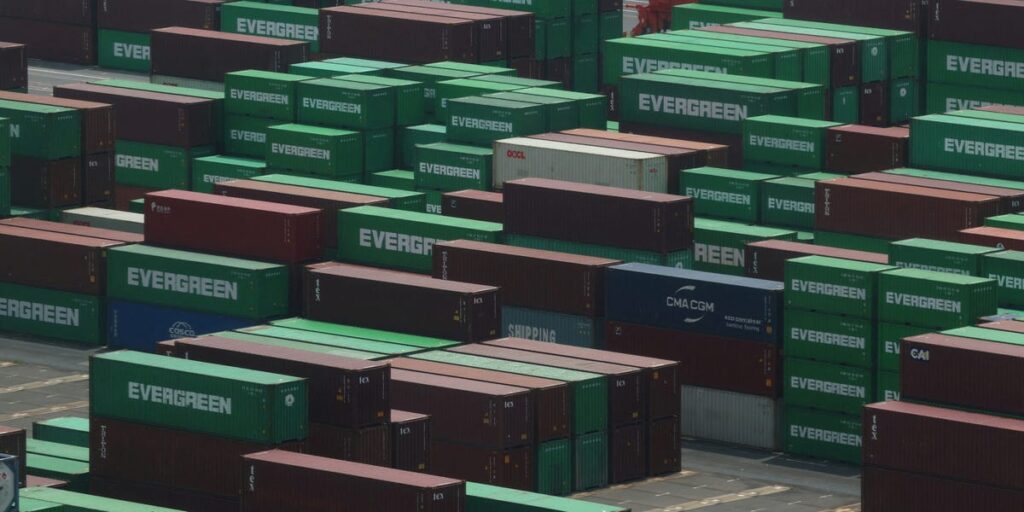The 90-day tariff pause did not yield 90 announced trade deals.
After giving 75 trading partners a three-month tariff pause and telling Time in an April interview that he “100%” has “made 200 deals,” President Donald Trump came away with three trade deals, some tentative, as of mid-July.
Months of negotiations with Japan, Korea, and Thailand have not yielded agreements. As Trump sends out a new round of tariff letters to over 20 countries, threatening some with tariffs as high as 50%, trade experts told Business Insider that many sticking points stand in the way of quick trade deals.
Navin Girishankar, president of the Economic Security and Technology Department at the Center for Strategic and International Studies, told Business Insider that the Trump administration believes that unpredictability and ratcheting up tariffs give them leverage, but it remains questionable if that is effective.
“I’m actually feeling that it’s more and more the loss of leverage,” said Girishankar. “Because the reason we’re shifting timetables is because we’re not able to get to the deals that we think are acceptable.”
Domestic politics throw a wrench in negotiations
Multiple trading partners that Trump is negotiating with are dealing with elections and policies that are popular in their respective countries.
Girishankar told BI that, for example, Korea has a draft of a digital platform bill that its legislators see as important to national security. But the issue is, Girishankar says, the bill would be considered a barrier to entry for US tech companies like Meta and Google if it passes.
Trump has also been complaining on social media that Japan won’t import rice from the US, while the US imports a large number of cars from the Asian country.
Drew DeLong, lead in geopolitical dynamics practice at Kearney, a global strategy and management consulting firm, told BI that Japan has been under a lot of domestic pressure because it has an upper house election in late July.
“Once that’s finished,” said DeLong, “It will be important to watch how PM Ishiba handles the Trump relationship with less domestic political pressure.”
Despite representing a relatively small part of the national GDP, the agriculture sector in Japan has cooperatives with significant lobbying power that have gained protectionist measures on staple crops like rice.
“Agriculture has historically been a very challenging component of any trade agreement. Farmers are an important constituency in both countries,” Girishankar added of the US and Japan.
Ann Harrison, dean of the University of California, Berkeley’s Haas School of Business, told BI that the Trump administration may have simply set itself up for “a herculean task.”
“Different countries have different sensitivities, like how it’s the auto industry for Japan, and lumber and pharmaceuticals for Canada,” said Harrison. “That’s why any meaningful trade deals typically take three years and won’t happen in such a short period of time.”
China complicates trade deals
Though the tariff pause on China doesn’t expire till mid-August, the manufacturing hub casts a long shadow.
Harrison said the Trump administration needs to balance its need to reduce the trade deficit, without going so far that it would push Asian allies like Vietnam and the Philippines toward a closer alliance with China.
“It’s politically interesting that the US gave Vietnam and the Philippines some of the lower tariffs,” said Harrison. “This is also becoming a militarily loaded decision as much as an economic one.”
In March, Defense Secretary Pete Hegseth met with Philippine President Ferdinand Marcos Jr. and said the two countries, which have been fighting “shoulder-to-shoulder” since World War II, will work toward “reestablishing military deterrence” in the Indo-Pacific region.
DeLong also said that the transshipment issue — one country rerouting its goods through another country, potentially to evade higher tariffs — has also made a comeback in the agreement with Vietnam, mostly due to concerns that China would reroute shipments to the US through Southeast Asia.
“Still unclear how this will work mechanically,” said DeLong. “Higher RVC thresholds? Port of shipment tracking? Headquarters country of origin?”
According to statistics from the General Administration of Customs in China, the total value of China’s exports to Vietnam increased by at least 15% every month in 2025 compared to the same months in the previous year.
Girishankar echoed the concerned that transshipment would be complicated to implement and define, though he understands what the administration is attempting to achieve.
“Some countries are worried that literally any Chinese content can be considered a transshipment,” said Girishankar. “Bilateral negotiations with countries are also being used as the main way of achieving a global rebalancing of trade deficits, which is really challenging.”
Read the full article here


